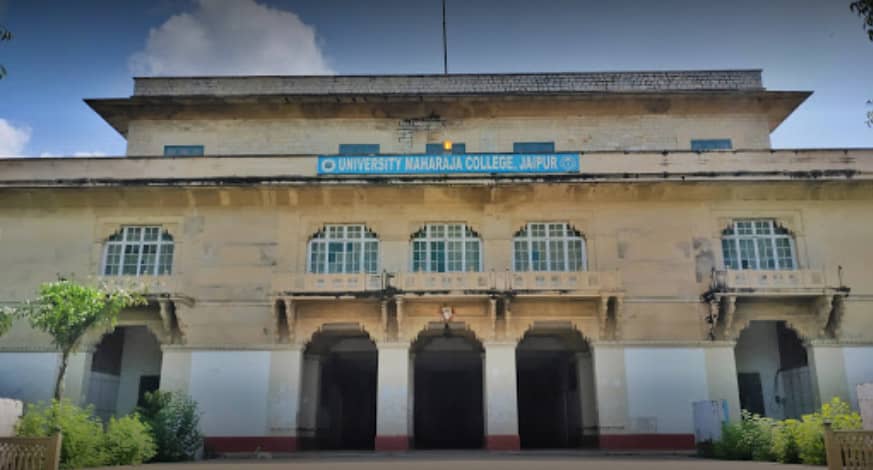
Amidst Revolutionaries
Maharaja College provided fertile soil for Ram Narayanji’s curious mind. At the college library, he could access and read newspapers for the first time in his life! Here, he read day and night about political history and contemporary struggles to establish independent nation-states all over the world. For instance, he learnt about Japan’s fight against the Russian Empire in the early 1900s, read the Italian nationalist Giuseppe Mazzini’s memoirs and Morgan Schuster’s Strangling of Persia.
At the more familiar domestic front, Ram Narayanji was drawn to the writings of Aurobindo Ghose, Bankim Chandra Chattopadhyay, Bhagat Singh, Lokmanya Tilak, Swami Vivekanda, among others. His involvement to Indian independence movement soon transformed from a merely intellectual engagement to a real on-ground fight: in 1912-13, Ram Narayanji joined Shri Arjun Lal Sethi’s Kranti Dal (Revolutionary Party) with Shri Chhotelal Jain and Shri Gulab Singh Sogani, two tall leaders of the freedom movement in Rajasthan. His readings of nationalist writers continued and only solidified as Kranti Dal made certain texts compulsory for its members. Consequently, Ram Narayanji became familiar with Lala Har Dayal’s articles, Vinayak Savarkar’s Indian War of Independence as part of his induction at Kranti Dal. Later, he was fascinated by the Theosophical Society.

During his college days, Ram Narayanji’s domestic life also took shape: he married Anjana Devi, daughter of a wealthy trader from Srimadhopur. Ram Narayanji taught her languages and basic accounting in Rajasthan where women’s education was not only resented but was considered a social taboo. When at home during college vacation, he taught Anjana Devi late at night when everyone else in the household would be asleep to avert their attention. Soon, Anjana Devi not only became literate but emerged as an able mass mobilizer during the freedom struggle and a pillar of tremendous support to Ram Narayanji.
From 1913 onwards, Ram Narayanji became a conduit for supplying messages and information to revolutionaries spread in parts of north India, including those associated with a plot to assassinate Lord Hardinge, the then Viceroy of India. Often, he would facilitate the hiding and transport of revolutionaries across Indian towns and cities. As Ram Narayanji fully involved himself with revolutionary activism, his interest in studying Engineering subsided. He decided to quit college around 1915. Nevertheless, on his brother’s advice, he took a few examinations, then known as inter-science examinations. He rejected a way out of India by turning down a prestigious scholarship to study in Japan and chose to contribute to the nationalist cause at home.

In 1915, after a few years of training, Ram Narayanji was assigned his first important task at the Kranti Dal: along with Jaychand, he had to assassinate Sir Reginald Craddock, Home member of British Raj administration. However, this job did not materialise as Jaychand refused to carry out this murder and later Craddock took ill. Around the same time, a student revolutionary in Calcutta killed a senior police officer.Sometime after that, Mahatma Gandhi visited the city as part of his year-long tour of India on the advice of Shri Gopalkrishna Gokhale. Gandhiji broke his vow to remain silent on this tour on 31 March 1915 and spoke in front of a student’s assembly in Calcutta. He praised the anxious Indian youth’s readiness to die for the cause of India’s freedom, but he could not make sense of their desire to assassinate political figures and spread violence across the country. He urged them to give up political violence and use nonviolent means to oppose the British imperialism. This speech deeply impressed Ram Narayanji and left him thinking about the futility of political violence. Indeed, he had already been introduced to Gandhiji’s anti-colonial activism in South Africa through writings of prominent nationalists such as Krishnakant Malviya and Ganeshshankar Vidyarthi but this experience was more personal as it directly addressed Indian youth like him.
He did not immediately abandon revolutionary activism but a seed had been sown. His mind was full of conflicting ideas: he read Marxist literature, especially in the light of the Russian revolution of 1917, and was somewhat drawn towards Marxism. However, at this point in India’s history, Gandhiji’s influence on the minds and hearts of the masses had tremendously grown. Even revolutionary anarchists such as Sethiji and Vijay Singh Pathik came to respect Gandhiji’s leadership and often sought his advice and blessings. Naturally, Ram Narayanji became curious to learn more about the Mahatma’s philosophy. Coupled with his personal experience of exploitation by the princely states in Rajasthan, Ram Narayanji soon gave up anarchist revolutionary activities.


